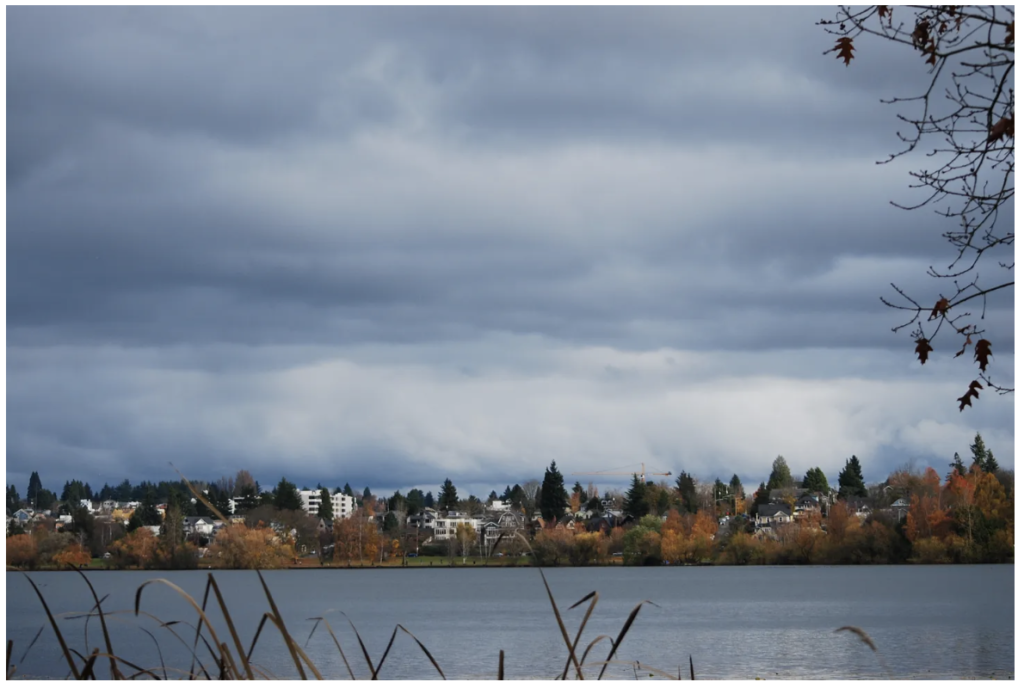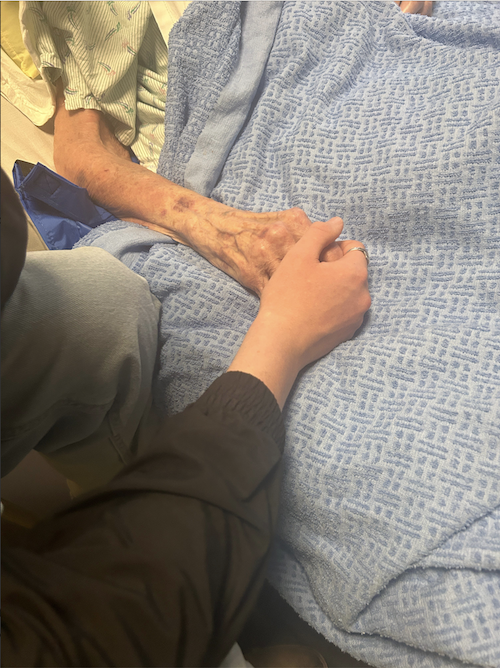Hello from Seattle. I’m in the Pacific Northwest helping navigate decision making, with family, about end-of-life care, hospice, and the transition and finality of the death portal.
Seattle is the birthplace of my husband and my first child. It is a beautiful but crowded city, surrounded by water and mountains. The damp, grey weather of the Puget Sound and surrounding temperate rain forests give the city its nickname, “the emerald city,” and in some regards, it just might be the perfect city – a metropolis surrounded in every direction by stunning natural beauty. A bastion of liberal thinking and politics in an otherwise rural and conservative state, Seattle is a study in dichotomy: rain and sun, water and earth, and the virtuous cycle of decay and rebirth, in politics, economics, and natural rhythms.

Read this post on Substack for more, including links to
* the products I’m using to support my health at this time,
* what I’m listening to on Spotify,
* and a tribute to my teacher, David Tresemer, who crossed the Threshold on Monday 2/12 at 12:12p,
founder and visionary of the Starhouse in Boulder, CO.
Background
In the past three weeks, I’ve spent 12 days visiting my loved one in the hospital, and have now spent many, many hours in the Intensive Care Unit, Special Care Unit, and, due to hospital overflow, in the Surgical and Medical Extended unit, awaiting my loved one’s discharge into hospice care and in-home care, which I have helped her family arrange, according to her wishes.
We can anticipate much of what happens at the end-of-life in our early adulthood and midlife, if willing to look and face our fears and insecurities about health and wellness, disease and illness.
As I’ve experienced it, “natural medicine” modalities have been largely pushed to the fringes of our western society, demonized along with the wise women and men (the herbalists, healers, shamans, and medicine keepers) who held traditional knowledge in cultures throughout Europe and into North America. I speak only from my lineage, as I’ve pieced together our cultural disconnect from nature, across ancestry, reaching into England, Spain, Italy, France, Denmark, Sweden and Norway.
Perhaps you or a loved one or partner has rekindled an interest in natural medicine. Many people do after becoming disenfranchised with western allopathic medicine, where one prescription creates a cascade of side effects while treating a symptom of disease, and often failing to cure without continuous use of additional prescription medicine. The power of allopathic, pharmaceutical medicine can be explained by the Ayurvedic concept of visha dravya, or that poisonous or toxic substance, used as medicine, which subtly pervades the body with immediate effect, and with compounding side effects up to and including death, depending on dosage and timing of ingestion. Pharmaceutical side effects are further managed by your MD via additional prescriptions, and those prescriptions, and costs (both financial and health-wise), snowball.
My loved one has congestive heart failure. The time to address her heart condition, to strengthen her heart muscle, its electrical impulse, strength and rhythm of her heart rate, and the tone of the arterial and veinous shiras (cardiovascular system), made up of the srotas or passageways through which red blood and blood serum (rasa and rakta) flows, was many decades ago. Instead, her primary care physician (PCP) put her on cascading list of medications, which her cardiologists later added to: blood thinners, a beta blocker, and eventually, diuretics and minerals to balance blood pressure. By the time she landed in ICU she was on seven medicines per day, and this is less than the handfuls many patients find themselves on.
Her heart functioned under medical management, but she disliked taking pills, and she and her partner generally distrust the medical system. She also failed to follow the advice and instructions of her physical and occupational therapists. This resulted in a conundrum, as she experienced worsening symptoms and left her medical providers with a lack of treatment options.
Which led us, as a family, eventually to witness a decline of health, and ultimately, to hospice care.
Of all the care services offered by western medicine, hospice may be the most compassionate and holistic. Acknowledging that the end-of-life transition can be eased through measures designed to bring comfort, such as pain relief, and dealing with big emotions, such as fear and anxiety, hospice provides a menu of services, including RN visits, limited in home personal care, volunteers who can cook, clean, and do laundry, access to a social worker, and a spiritual advisor, all covered 100% under current Medicare and Medicaid coverage. However, end-of-life symptoms continue to be medically managed, with powerful opiates such as morphine for pain, and benzodiazepines such as lorazepam for anxiety and sleep. Addiction and waning effect are not a consideration at end-of-life.
As a woman and mother, who understands the process of how the body transitions through death, and who recognizes the function and role of spirit and soul, I have practiced observing how family members’ cope with their loved one’s decline. I’ve watched as friends and family explain (to themselves) that the visions one has during this transition period are chemical imbalances in the brain, related to heart failure and lack of blood and oxygen. And yes, the physical, the mental, and the spiritual, work in tandem, in a beautifully orchestrated symphony of coherence, or sometimes, in excruciating family dysfunction, in incoherence.
The visions or hallucinations our loved one experiences, during the transition period from life to death, from my humble perspective, are the spirit’s initial foray into shifting and expanded consciousness, as the spirit prepares to separate from, and eventually leave the body.
Ayurveda recognizes that the doorway through which the spirit exits creates its own set of karmas (actions and reactions) and seals samskaras (mental formations or impressions) which collectively influence future karma. The goal in the transition period, from life through the portal of death, is to create a peaceful and sattvic environment, so the spirit can exit through the body’s upper channels or the higher chakras, setting up the spirit for a soul journey that is elevated and supported by high frequency and vibration, rather than debased, and low.
Instead of fighting death, we can choose to peacefully transition, and embrace the journey to the afterlife.
This reconciliation with death is a relationship that extends from our relationship with life, with the gratitude practices and love cultivated during the physical lifespan.
A shift in perspective on death
Instead of medicalizing death, with “getting well” the goal, and seeing death as failure and something to be feared, we can instead give ourselves the time and space to simply be with our loved one; to ask questions, and hear stories; and witness the sometimes unnerving forays as the spirit practices leaving the body and travels without its physical attachments. Many families report their elder loved one seeing and hearing children playing, or report their elder’s overwhelm with a room full of people, while sitting alone together. The elder can see their ancestors in the portal space of death, awaiting them, to welcome them across the threshold.
There is much beauty, awe, and wonder to be had in the transition between life and death. This is an extension of my practices of witnessing beauty, in awe and wonder, in many liminal spaces in life.
In the western Christian tradition, I was raised “to fear not.” But this practice of being present in the face of death is exactly that, a practice. In that practice, I focus on who, what, and where to love, rather than what to fear.
As I walk beside my family during this transition, stripped down to the bare essentials of what it means to be family, I am entering into each decision in the light of Love, practicing presence, and seeking to honor my elders.
May we seek wholeness in life as well as in death.
And as the great prayer and mantra invokes,
Lokah, samastah, sukhino, bhavantu.
“May all beings everywhere be happy and free, and may the thoughts, words, and actions of my own life contribute in some way to that happiness and to that freedom for all.”
Blessings to you and until next time, happy musing,


